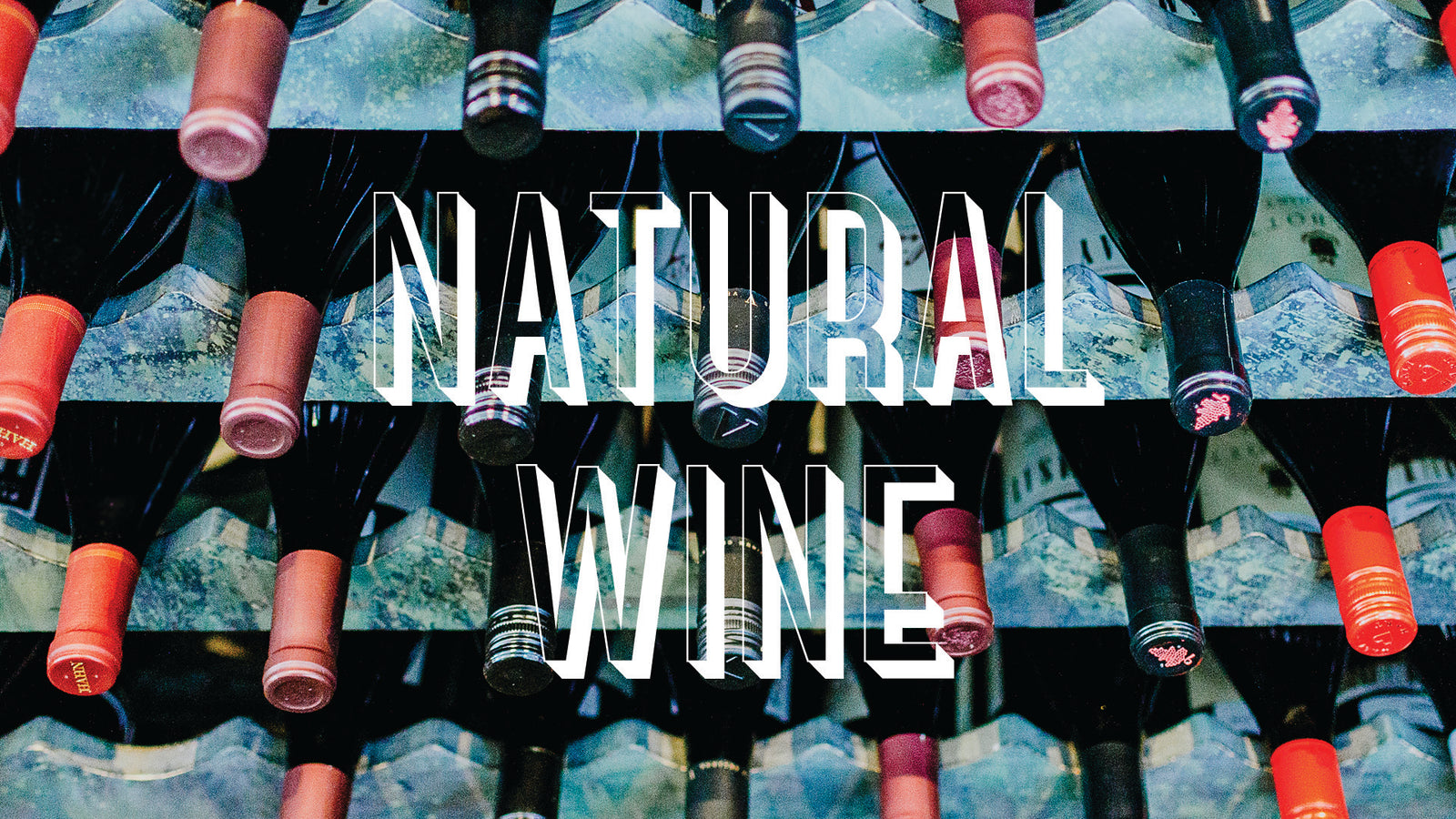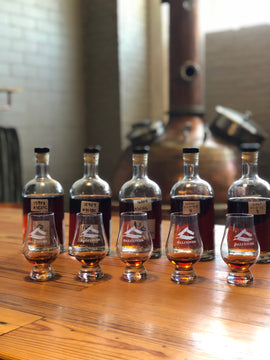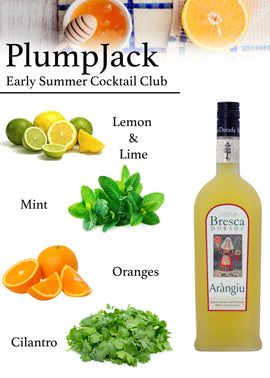"Natural" is one of the biggest buzz words in the wine scene today. Here in San Francisco, more and more bars and restaurants are featuring natural wines on their wine lists, with some transitioning fully to all natural lists.
At the shop, we frequently receive the question “do you have any natural wines?” (We do! Check out our selection). Natural wine has begun to emerge from the shadows of hipster wine cellars into the mainstream. Heck, even Kourtney Kardashian is singing praises of natural wine on her new blog. But with all this talk about “natural” wines, there is surprisingly very little agreement about what the term actually means…
So what is natural wine, anyway? With no “formal” definition to reference, consumers can find it difficult to identify what constitutes a natural wine. Labels are no help, and to make things even more confusing, the wine community itself can’t even seem to agree upon what actually makes a wine “natural.” So let's take this highly elusive concept and try to dumb it down into one succinct explanation:
*Natural wine aims to produce wine in its purest expression, with minimal additives and minimal intervention. In other words–nothing added, nothing taken away.
Natural wine exists on a spectrum. There are numerous decisions in the winemaking process that can ultimately separate a natural wine from all other wines. Connoisseurs and experts alike all seem to cite something different as being integral to the “natural-ness” of a wine. All this aside, the ultimate goal (for most of us) is to find a great wine so let’s dive into to what it really takes…
What we look for when shopping for a natural wine? *standards may vary
1. Does it use Organic/Sustainable Viticulture practices
For this to ring true, grapes must be farmed without the use of pesticides or fertilizers, additionally the wine itself must be produced with out the addition of sulfites (an additive that help reduce oxidation & maintains freshness). The entire process of sustainable farming can be grueling and outright unfair at times (which we won’t go into here), but once a winery attains its USDA organic stamp of approval, they can proudly say their wine is in fact “organic.” But the search doesn’t end there, if a label reads “made with organic grapes” it may contain sulfites after all.
So what the heck is going on in Europe? It turns out across the Atlantic, organic wine can contain added sulfites. This is where additional research is required, to find out the producers’ particular farming practices instead of holding out for a USDA stamp on every bottle.
*We believe natural wine is not natural unless the grapes have been sustainably farmed. Most of the community would agree and consider this a staple to that it’s a sort of baseline.
2. Biodynamic Practices
For starters all biodynamic wines are organic, but not all organic wines are biodynamic. Biodynamic farming kicks organic viticulture up a notch by embedding some what mystical ideas into the winemaking process. Without going into too much of the science, the key idea behind biodynamics remains that the vineyard is an ecosystem, and the goal is to promote harmony within all living and nonliving aspects of that ecosystem.
Biodynamic farmers employ practices such as: using the moon calendar and other astrological influences to inform the timing of each stage of the winemaking/farming process, using crop rotation to maintain the health of the soil, and utilizing various animals to add greater biodiversity. Some biodynamic producers can get pretty “hippie dippie”– like stuffing quartz into the horn of a cow and burying it in the vineyard for its supposedly "magical" benefits (we aren't here to judge). Whether these practices have a direct effect into producing a better wine, is up for debate, but what is certain is that these labor of love wines are often some of the best quality on the market.
*Biodynamic wines can be identified by the Demeter stamp, making it easy for consumers to spot the diamonds on the rough.
3. Human Touch
You’ll often hear the term “hand-harvested” as some kind of implied signal of quality–this means that farmers use hand tools (like shears and knives) to harvest grapes, as opposed to machine picking. But does hand-harvesting actually make a difference in the quality of a wine? Well, for one, hand-harvesting is far gentler on the grapes. It can be a crucial investment for more finicky, thin-skinned grapes like Pinot Noir that require a softer touch. Broken grapes can invite unwanted oxidation and bacterial growth. *This is a huge factor for natural winemakers using low, or no, sulfur additions who are already susceptible to these issues.
Additionally, many winemakers believe that only an experienced human eye can pick the highest quality fruit from the less desirable fruit. Hand-harvesting is essential for vines with grape bunches that ripen the grapes in intervals–farmers must make several rounds picking grapes if they want all the grapes at the same ripeness/sugar levels. Hand-harvesting is a time consuming and, thus, expensive process, and the cost of the wine will most likely reflect the cost of production.
*Natural wines are frequently hand-harvested to protect against bacteria and oxidation, but also because natural wineries are frequently small-scale enough for hand-harvesting to be a feasible option.
4. Native Yeast
Another common criteria for natural wine is native yeast. Found on the skin of grapes, yeast is essential to the fermentation process which converts sugar into alcohol. In 1859, Louis Pasteur famously discovered this reaction–that yeast was the secret catalyst for fermentation. Before then, this grape to wine transformation was as miraculous as Jesus turning water into wine. In the 1960s everything changed with the emergence of dried cultured yeast strains, and thus moving away from the more “natural” way of winemaking.
Today, there are entire catalogs filled with pages upon pages of yeast strains for winemakers to choose from. In fact a majority of winemakers (at least in the US) use cultured yeasts and for good reason. Using cultured yeast provides–more precision and control in the winemaking process, the ability to seek out specific desirable flavors (for instance, a strain that brings out more tropical fruit flavors in a Sauvignon Blanc, or fruity cherry notes in a Pinot Noir), less vintage to vintage variation and overall a more consistent product over the years
*That being said, a natural winemakers’ commitment to the pure expression of the grapes and the land, is at odds with the use of cultured yeast. Technically grapes contain everything they need to create wine, which is the primary reason we consider native yeast to be a deciding factor in classifying a wine as “natural.
5. No Additives
As mention in section one a “natural” wine often times means there are no additional substances that have been used to alter a wine. Like yeast, there are other additives that can prohibit a wine from being classified as “natural.” Here are a few examples of additives that are commonly used by winemakers and often discouraged by our “naturalists” :
-No SO2 (sulfites)
-No yeast
-No tannin Powder (a more cost effective version used over oak barrel aging)
-No sugar (Not legal in California)
-No filtering or fining
-No acidity adjustments (de-acidifiers & acidifiers)
While these additives can often times enhance the flavor and age ability of a wine, too many can hint at a mass produced, poorly looked after wine. It is not a big leap of faith to see that this conflates with the primary directive of natural winemakers and producers. (Learn more about additives in this article from WineFolly.com)
6. A Word on SO2
Buckle up, this is one of the more divisive topics among wine drinkers. There is no scientific evidence that sulfur causes headaches. We happen to find the additives listed in the previous section to be much more offensive then a dash of SO2 added to preserve the quality of a wine. That being said, we can only give you our opinion and leave the decisions up to you.
Final note: Some say, all wine is natural. Others say, no wine is natural. Grapes are natural, but once the winemaker’s hands touch the grapes, it is a manmade entity. From the moment vines were trellised to the human hand bottling the finished product, no part of the process is naturally occurring. The collaborative effort between nature and man is perhaps what makes wine of any kind special. Winemaking allows humans to harness nature and create something truly beautiful out of its bounty.
Stop by our wine stores and check out our selection of Natural & Organic Wines and see if you can spot what type of “naturalist” you have chosen to be.
Find similar articles
Wine




